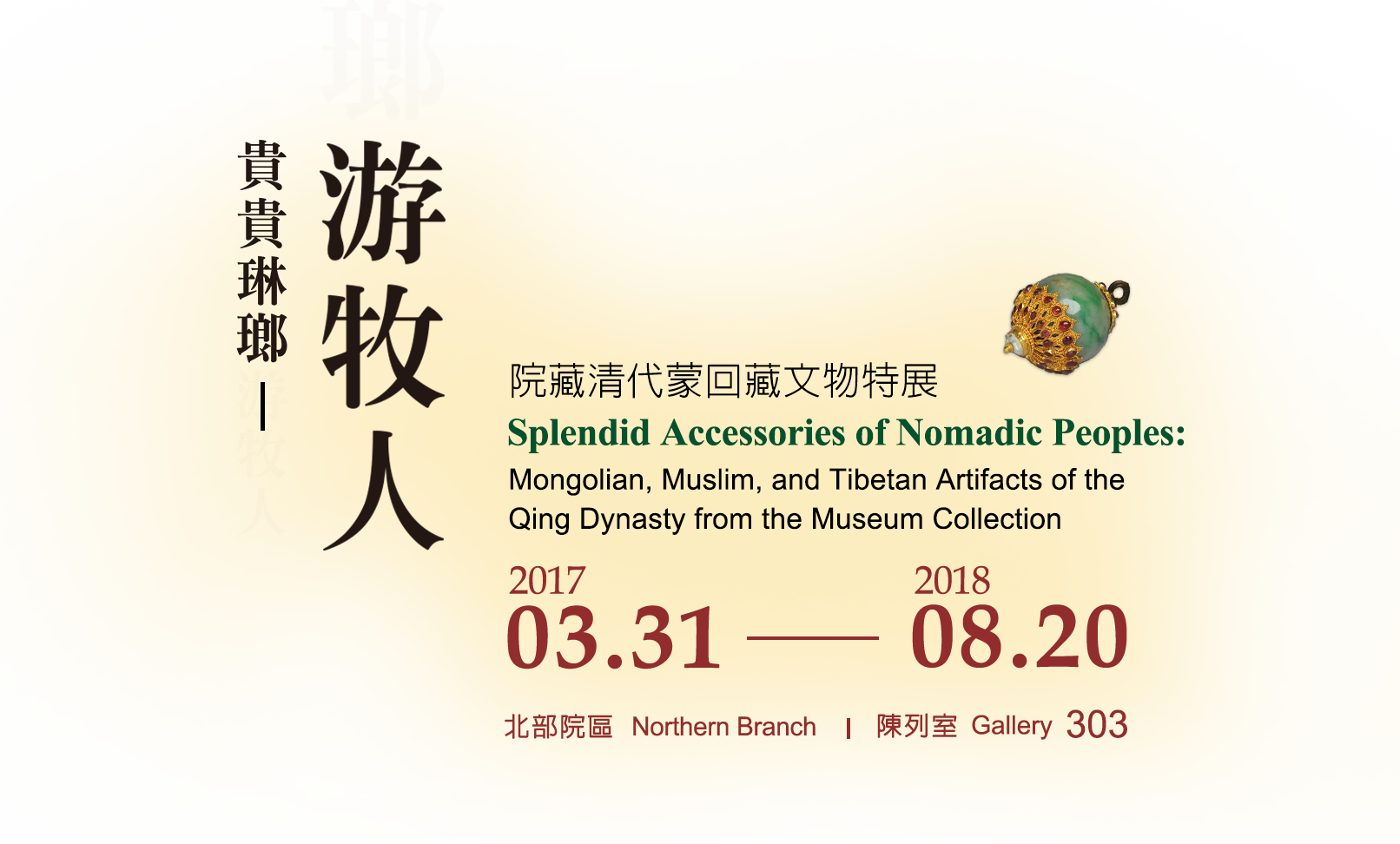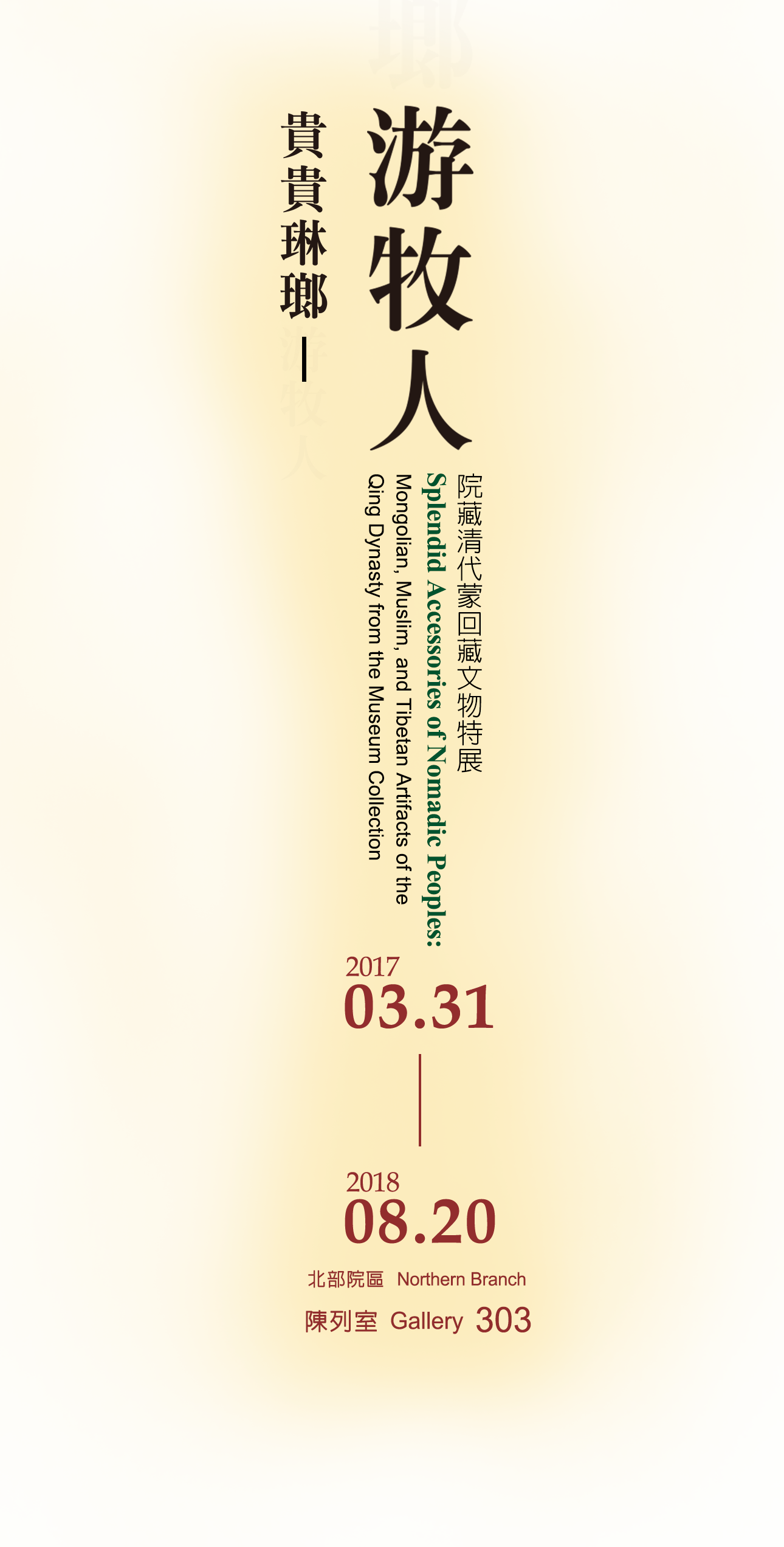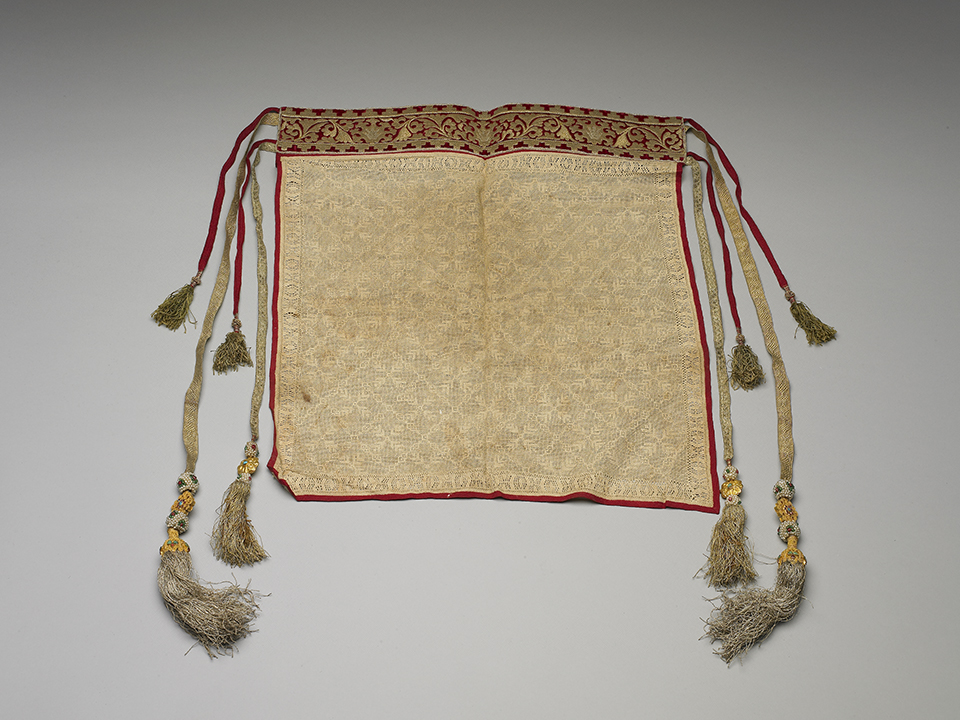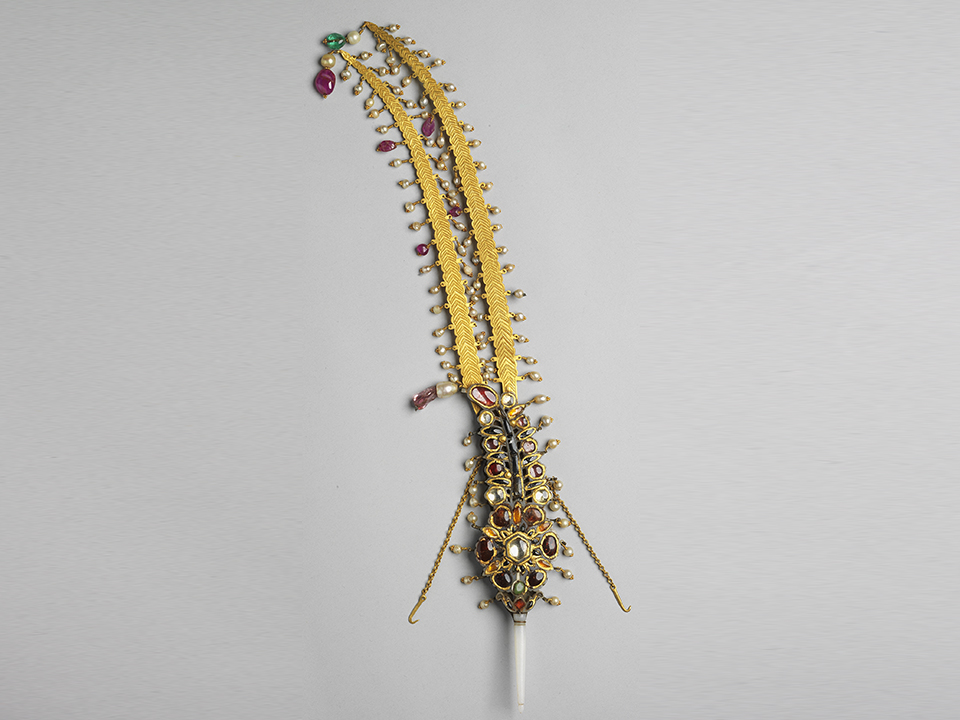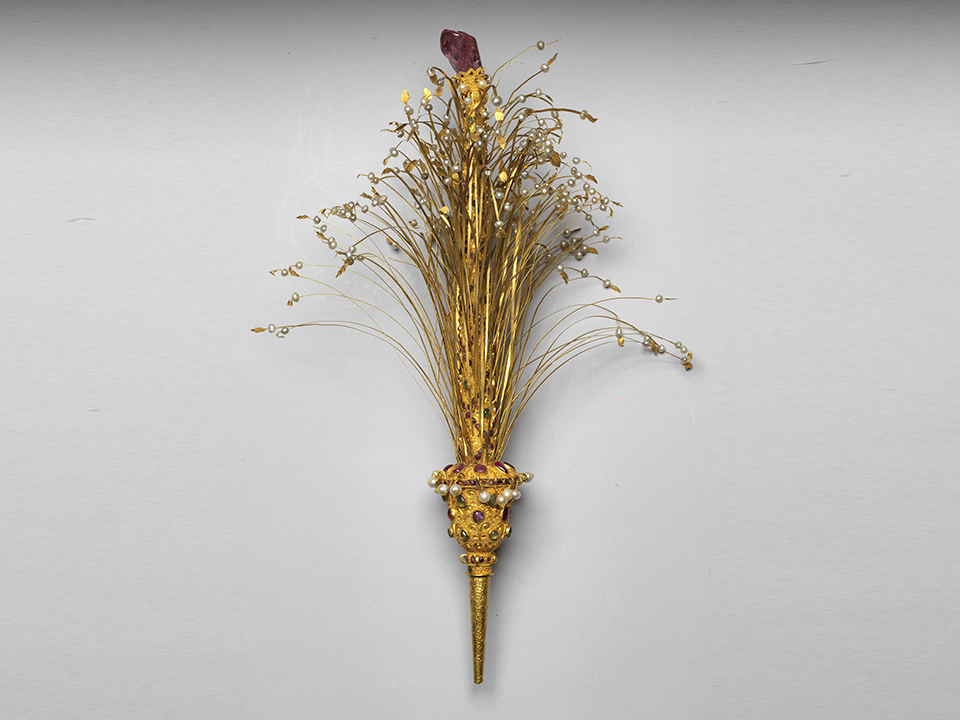The western Muslim regions of China are located at the confluence of Europe and Asia, being home to ethnically and linguistically diverse groups of peoples, including Kazakhs, Tajiks, Uzbeks, and Uyghurs all co-existing at the same time. Located at a vital point along the Silk Route, it was a place where Mediterranean, Islamic, and Indian cultures converged by means of trade and commerce over an extended period of time. Both the movement of peoples and circulation of their art techniques enjoyed free passage in this region transcending borders, forming a mix of cultures. In the Yuan dynasty, the Mongols were able to connect the great civilizations of East and West, and later the Manchu in the Qing dynasty assumed control over Inner Asia, reopening this passage in the west once more. Consequently, the delicate metal wares of nomadic peoples and the aesthetics of Islamic jades and precious stones appeared as far away as the Forbidden City in Beijing, injecting Qing dynasty art with new vitality.
Lace veil with tasselsPresented from Yengisar in 1779
- Qing dynasty, 18th c.
- Work of the Muslim regions
This lace veil is an item used in Tajik women's wedding. The lace veil, weaved in a rather unique way, features a hollow square added with silk threads to produce geometric patterns. The lace veil is one of the few surviving works of such designs from the eighteenth century. The upper edge of the veil was embroidered with guipure embroidery, one side of which comprises grass-patterned red velvet strips in gold silk threads, and the other side of which contains flower-patterned blue fabric strips in silk threads. The aforementioned embroidery techniques and designs are common in Central Asia. The lace veil is attached with two sets of bands, one set of which consists of a red cotton thread decorated with a silver silk thread knot, and the other is made up of a gold silk thread decorated with a pearl knot and a gemstone pendant with gold inlay. For the latter, gold pearl-based geometric patterns were employed to form its golden accessories, which were embedded with red and green gemstones, exemplifying a typical Islamic style. This veil was made in Yengisar, a city under the administration of Kashgar, which was a gathering place west of China linked with the northern, central, and southern routes of the Silk Road in ancient times. Trading between countries in Central Asia bloomed during the time of the Silk Road, and the lace exhibited here truthfully exemplifies the multicultural elements observed along the Silk Road.
Gold aigrette with pearl and gem inlay
- Presented from Kashgar in 1770 Qing dynasty, Early 18th c.
- Work of the Muslim regions
The Qing dynasty wooden box used to hold the gold aigrette with pearl and gem inlay shown here is written with the characters "gold–jade jigha," where jigha may have been the Chinese pronunciation of the Persian word for the feather headdress found on the headscarves worn by Indian and Islamic aristocrats or royal families. According to the "Inspection Report of the Committee for the Disposition of the Qing Imperial Possessions," the gold aigrette with pearl and gem inlay was offered by Kashgar to the Qing court in 1770. The roots of the feathers found on this headdress consist of jade-made tubes. The center of the headdress is a circular flower, whereas the two sides of the feathers are adorned with a series of round gemstones that progressively diminish in size. The end of feather hangs down on one side and contains a single gemstone. Such a design is identical to the accessories found on Islamic headscarves. The bottom of the headdress, also decorated with gemstones, is attached with loosely spread gold leaves. The two sides of the headdress are equipped with a golden hook that can be fixated to hats. Behind the feathers are two long crests. The feather headdress, initially worn only by aristocrats, took on different forms after the eighteenth and nineteenth centuries. New complex or altered designs of the headdress caused it to deviate from its original purpose (i.e., used as a symbol of social status) to one that focused on the pursuit of exquisiteness. Based on the craftsmanship and style of this artifact, it is surmised to have been an imitation of Islamic-styled Altishahr works.
Gold overlay aigrette with pearl and gem inlay
- Qing dynasty, Early 19th c.
- Work of the Muslim regions or the Mughal Empire
This magnificent accessory, called gold overlay aigrette with pearl and gem inlay, is a clear embodiment of Islamic culture. The artifact holds numerous thin, long golden branches that extend outwards from the central column. The top of the column is a pink tourmaline featuring a design that is reminiscent of the cluster of upright feather tassels found on kings' headscarves in Islamic culture post-eighteenth century. In addition, the beads and red and green gemstones embedded on the central column demonstrate colors, aesthetics, and inlay and string decoration techniques that mirror those of the Mughal Empire. The Islamic-styled headdresses found in the collection of the Qing court may have been offered by Altishahr, a region comprising the Tarim Basin as well as the Southern Circuits of Tian Shan at the time. The said region includes modern-day Afghanistan and a part of Kyrgyzstan. In the early nineteenth century, merchants of the Khanate of Kokand controlled the import and export trades of Central Asia as well as those of Northern and Southern Circuits of Tian Shan. Because of geographical vicinity and cultural similarity, Islamic culture-related artifacts were remarkably common in Altishahr at the time, contributing to some of its artifact masterpieces being subsequently sent to the Qing court.
